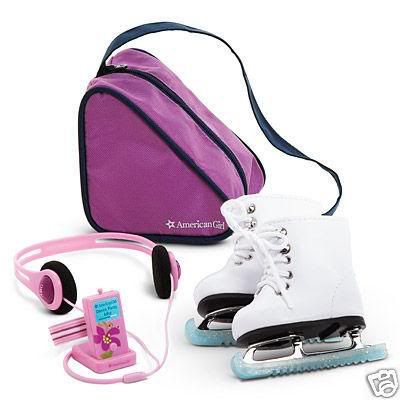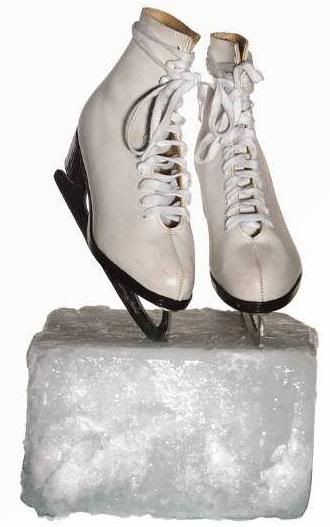
Ice Girl’s been skating for a year and a month. She’s now a beginner and I’m an advanced newbie.
Here's what I learned in 2008. Feel free to add your wisdom in the comments area!
- Don’t wear jeans. Geez. I’ll never forget every mom, coach, and skater telling me that Ice Girl shouldn’t wear jeans on club ice. Many told me twice. I get it, I get it!
- Pick a good coach. I lucked out here and we are thrilled with Ice Coach. However, it’s important to pick a coach that encourages your skater, has great skills, and works well with you. I know some fabulous coaches that I’m relieved we didn’t choose – snotty comments, terrible relationships with parents, diva attitudes. I also know some that we really like and admire. I tell you, I’m relieved that we have a great one from the start.
- Watch your mouth. O.K. Quit sniggering. I’m trying not to write anything about real people here. Well, not anymore. Anyway, figure skating is a pretty small world and tongues wag even when you’re not contracted for ice. Smile, nod, and bring a book to avoid the nasty conversations.
- Keep a blanket and coat in the car. This seems obvious, but when temps are in the high 80’s, it’s tempting to box up the blanket and coat for storage. Keep them in the car anyway.
- Outwit your skater. Make an extra copy of her music and keep it in the glove compartment. Have some skate socks stashed in the van. Buy gloves in quantity when they hit the clearance racks in May. Keep hair ties and a brush in your vehicle’s seat pockets. Stash some snacks in the van, too. Once a week, have your skater clean out the van/mobile locker room and replenish supplies.
- Bring your checkbook. The figure skating world runs on checks. Write ’em out and don’t expect them to clear your account for a month…or two.
- Make Learn to Skate last as long as you can. As I’ve written many times, Learn to Skate is the only bargain in figure skating. Try talking the skating director into advanced figure skating lessons during Learn to Skate. Your checkbook will thank you.
- Encourage recreational spinning. The $35 we spent to buy Ice Girl a spinner has paid off. She loves to spin on that thing and takes it to sleepovers. I’m told her on-ice spins are good and I credit that spinner. Also encourage putting the spinner away. Stepping on that thing in the dark isn’t funny.
- Diversify activities. We’re horrible at this, but multi-sport athletes have fewer injuries. Ice Girl loves to bike, so I’m hoping we’re covered.
- Keep ice schedules in the van. This is one I’ve just learned. Sometimes Ice Girl wants to walk-on to club ice. We belong to two clubs and skate at seven rinks. I can’t keep it all straight, so I’ve added the ice schedules to Ice Girl’s skating binder.
My 2009 resolution: learn more about figure skating's rules and mechanics. I want to be able to identify the jumps that I see on TV and be able to speak intelligently about what makes a quality spin or jump. I'm told that Ice Network is great for this, so I'll be shaking out the couch cushions to pay for a subscription.
Best wishes for 2009!













